For the 2025 school year, there are 2 public middle schools serving 995 students in Tunkhannock Area School District. This district's average middle testing ranking is 6/10, which is in the top 50% of public middle schools in Pennsylvania.
Public Middle Schools in Tunkhannock Area School District have an average math proficiency score of 31% (versus the Pennsylvania public middle school average of 26%), and reading proficiency score of 53% (versus the 52% statewide average).
Minority enrollment is 5% of the student body (majority Hispanic and Black), which is less than the Pennsylvania public middle school average of 46% (majority Black and Hispanic).
Overview
This School District
This State (PA)
# Schools
4 Schools
923 Schools
# Students
2,014 Students
591,579 Students
# Teachers
153 Teachers
44,337 Teachers
Student : Teacher Ratio
13:1
13:1
District Rank
Tunkhannock Area School District, which is ranked within the bottom 50% of all 675 school districts in Pennsylvania (based off of combined math and reading proficiency testing data) for the 2021-2022 school year.
The school district's graduation rate of 85-89% has decreased from 90-94% over five school years.
Overall District Rank
#379 out of 684 school districts
(Bottom 50%)
(Bottom 50%)
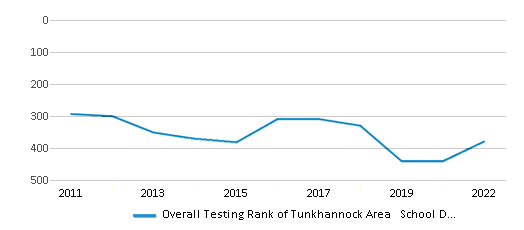
Math Test Scores (% Proficient)
33%
36%
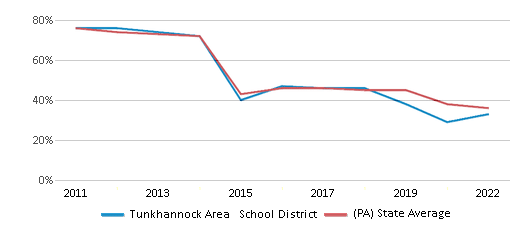
Reading/Language Arts Test Scores (% Proficient)
52%
55%
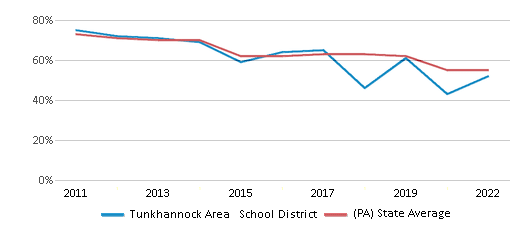
Science Test Scores (% Proficient)
58%
57%
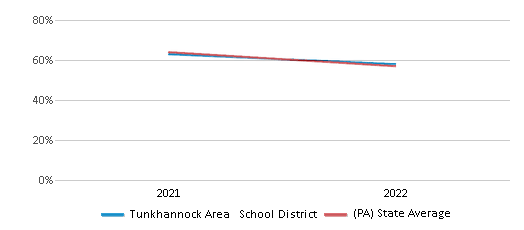
Graduation Rate
85-89%
87%

Students by Ethnicity:
Diversity Score
0.11
0.65
# American Indian Students
2 Students
1,239 Students
% American Indian Students
n/a
n/a
# Asian Students
5 Students
25,214 Students
% Asian Students
n/a
4%
# Hispanic Students
29 Students
97,970 Students
% Hispanic Students
1%
17%
# Black Students
12 Students
118,593 Students
% Black Students
1%
20%
# White Students
1,903 Students
316,870 Students
% White Students
95%
54%
# Hawaiian Students
4 Students
586 Students
% Hawaiian Students
n/a
n/a
# Two or more races Students
59 Students
30,545 Students
% of Two or more races Students
3%
5%
Students by Grade:
# Students in PK Grade:
-
1,623
# Students in K Grade:
115
15,933
# Students in 1st Grade:
156
17,465
# Students in 2nd Grade:
142
18,204
# Students in 3rd Grade:
146
18,156
# Students in 4th Grade:
165
19,235
# Students in 5th Grade:
156
33,809
# Students in 6th Grade:
139
92,720
# Students in 7th Grade:
150
128,929
# Students in 8th Grade:
162
129,773
# Students in 9th Grade:
149
34,725
# Students in 10th Grade:
163
28,504
# Students in 11th Grade:
197
26,584
# Students in 12th Grade:
174
25,919
# Ungraded Students:
-
-
District Revenue and Spending
The revenue/student of $25,177 is higher than the state median of $23,696. The school district revenue/student has grown by 6% over four school years.
The school district's spending/student of $23,754 is higher than the state median of $23,119. The school district spending/student has grown by 6% over four school years.
Total Revenue
$51 MM
$39,541 MM
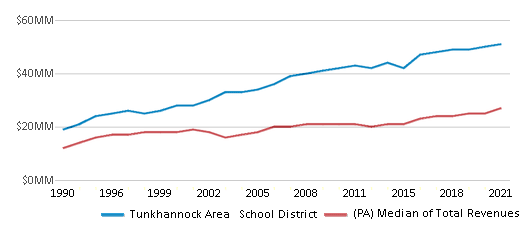
Spending
$48 MM
$38,578 MM
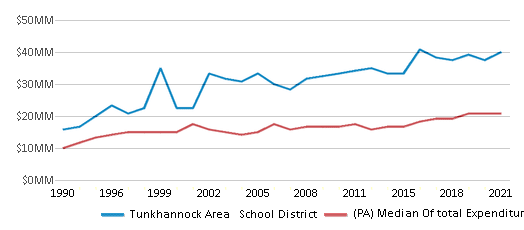
Revenue / Student
$25,177
$23,696
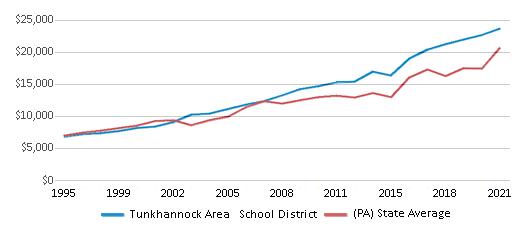
Spending / Student
$23,754
$23,119
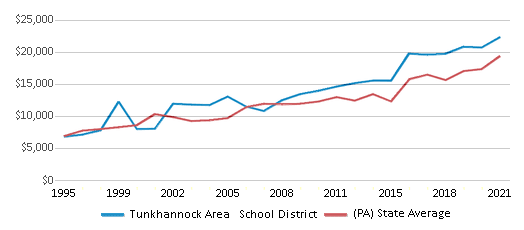
Best Tunkhannock Area School District Public Middle Schools (2025)
School
(Math and Reading Proficiency)
(Math and Reading Proficiency)
Location
Grades
Students
Rank: #11.
Tunkhannock High School
(Math: 35-39% | Reading: 54%)
Rank:
Rank:
5/
Bottom 50%10
135 Tiger Drive
Tunkhannock, PA 18657
(570) 836-3111
Tunkhannock, PA 18657
(570) 836-3111
Grades: 8-12
| 845 students
Rank: #22.
Tunkhannock Stem Academy
(Math: 20-24% | Reading: 50-54%)
Rank:
Rank:
3/
Bottom 50%10
41 Philadelphia Ave
Tunkhannock, PA 18657
(570) 836-3111
Tunkhannock, PA 18657
(570) 836-3111
Grades: 7
| 150 students
Recent Articles

Year-Round Or Traditional Schedule?
Which is more appropriate for your child? A year-round attendance schedule or traditional schedule? We look at the pros and cons.

Why You Should Encourage Your Child to Join a Sports Team
Participating in team sports has a great many benefits for children, there is no doubt. In this article you will learn what those benefits are.

White Students are Now the Minority in U.S. Public Schools
Increasing birth rates among immigrant families from Asia and Central and South America, combined with lower birth rates among white families, means that for the first time in history, public school students in the United States are majority-minority. This shift in demographics poses difficulties for schools as they work to accommodate children of varying language abilities and socio-economic backgrounds.





